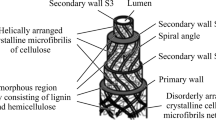Abstract
Fly ash is a solid waste generated in huge quantities from coal fired thermal power stations during the combustion of coal. In India, less than half of this is used as a raw material for concrete manufacturing and construction; the remaining is directly dumped on land side as land fill or simply piled up. Only a small fraction of it is used in development of high valued product. Due to environmental regulations, new ways of utilizing fly ash are being explored in order to safeguard the environment and provide useful ways for its utilization and disposal. With its richness in various metal oxides, it has tremendous potential to be utilized as a filler material in polymer composites. These days glass reinforced polyester composites find widespread application in erosive environment due to several advantages like high wear resistance, strength-to-weight ratio, and low cost. The cost of the composites can be further brought down using cheaper filler materials. To this end, this work uses fly ash in composite making and thereby suggests a new way of better utility of this industrial waste. It includes the processing, characterization and study of the erosion behavior of a class of such fly ash filled polyester-glass fiber composites. The engineering application of composites demands that it should have high wear resistance, low density and high tensile strength. In order to assess the behavior of composites satisfying multiple performance measures, a grey-based Taguchi approach has been adopted. After thorough analysis of factors, optimal factor settings have been suggested to improve multiple responses viz., erosive wear rate, density, flexural strength and tensile strength. This technique eliminates the need for repeated experiments; thus saves time and material. The systematic experimentation leads to determination of significant process parameters and material variables that predominantly influence the multiple responses.






Similar content being viewed by others
References
Kumar V, Zakaria KA, Sharma P (1999) Int Conf Proc on fly ash disposal and utilization. New Delhi
American Coal Ash Association (ACAA) (1996) Coal combustion byproducts survey. Alexandria, VA, USA
Mohamed AMO, Hossein M, Hassani FP (2003) Cement Concrete Aggr 25(2):49
Doye I, Duchesne J (2003) Appl Geochem 18(8):1197
Quirol X, Moreno N, Umana JC, Medinaceli A, Valero A (2001) Int PROGRES Workshop Proc on novel products from combustion residues: opportunities and limitations, pp 61–66
Olivares del VJ, Fernandez PC, Vale J, Quirol X (2001) Int PROGRES Workshop Proc on novel products from combustion residues: opportunities and limitations, pp 85–102
Kolousek D, Kovanda F, Tannenbergova R, Dornicak V, Styriakova I (2001) Int PROGRES Workshop Proc on novel products from combustion residues: opportunities and limitations, pp 105–114
Canpolat F, Yilmaz K, Köse MM, Sümer M, Yurdusev MA (2004) Cement Concrete Aggr 34(5):731
Sahu S, Majling J (1994) Cement Concrete Aggr 24(6):1065
Scheetz BE, Earle R (1996) Ceram Comp Intergrowths, pp 510
Saxena M, Prabakhar J (2000) In: Verma CVJ, Rao SV, Krishnamoorthy R (eds) Proceedings of the second international conference on fly ash disposal and utilization, pp. 26–31
Kruger RA, Hovy M, Wardle D (1999) Int Proc ash utilisation sympo. Lexington, KY, USA
Kruger R.A, Hovy M and Wardle D (2001) Int PROGRES Workshop Proc on novel products from combustion residues: opportunities and limitations, pp 295–303
Katy HS, Milweski JV (1987) Handbook of fillers for plastics. Van Nostrand Reinhold, New York
Horiuchi S, Kawaguchi M, Yasuhara K (2000) J Hazard Mater 76(2–3):301
Yang HF, Zhang Q (2003) Reuse and recycle of solid waste. Chemical Industry Press, Beijing
Alkan C, Arslan M, Cici M, Kaya M, Aksoy M (1995) Resour Conserv Recycl 3–4:147
Zheng YY (1998) J Fuzhou Univ (Nat Sci) 26(2):87
Ma J (2001) Fly Ash Compr Util 4:17
Kawamata A, Mihashi H (2002) Eng Fract Mech 69:249
Zahavi J, Schnitt GF Jr (1981) Wear 71:179
Kulkarni SM, Kishore (2001) Polym Compos 9:25
Miyazaki N, Takeda T (1993) J Compos Mater 27:21
Miyazaki N, Hamao T (1994) J Compos Mater 28:871
Tilly GP, Sage W (1970) Wear 16:447
Srivastava VK, Pawar AG (2006) Compos Sci Tech 66:3021–3028
Lindsley BA, Marder AR (1999) Wear 225(1):510–516
Chen Q, Li DY (2003) Wear 254:203
Barkoula NM, Kocsis JK (2002) Wear 252:80
Mahapatra SS, Patnaik A (2006) Int J Mfg Sci Tech 8:5
Mahapatra SS, Patnaik A (2006) Int J Mfg Sci Tech 9(2):129
Suwanprateeb J (1998) J Mater Sci 33:4917
Krumova M, Klingshirn C, Haupert F, Friedrich K (2001) Compo Sci Tech 61:557
Ruff AW, Ives LK (1975) Wear 35(1):195
Kuo Y, Yang T, Huang G (2008) Eng Optimiz 40(6):517
Glen SP (1993) Taguchi methods: a hands on approach. Addison-Wesley, New York
Acknowledgement
The authors extend their hearty thanks to the Editor-in-chief of Journal of Polymers and the Environment and anonymous reviewer(s) for their constructive suggestions that helped to improve the literal and technical content of the papers.
Author information
Authors and Affiliations
Corresponding author
Rights and permissions
About this article
Cite this article
Bishoyee, N., Dash, A., Mishra, A. et al. A Grey-Based Taguchi Approach for Characterization of Erosive Wear Phenomenon of Glass–Polyester Fly Ash Filled Composites. J Polym Environ 18, 177–187 (2010). https://doi.org/10.1007/s10924-010-0196-x
Published:
Issue Date:
DOI: https://doi.org/10.1007/s10924-010-0196-x




